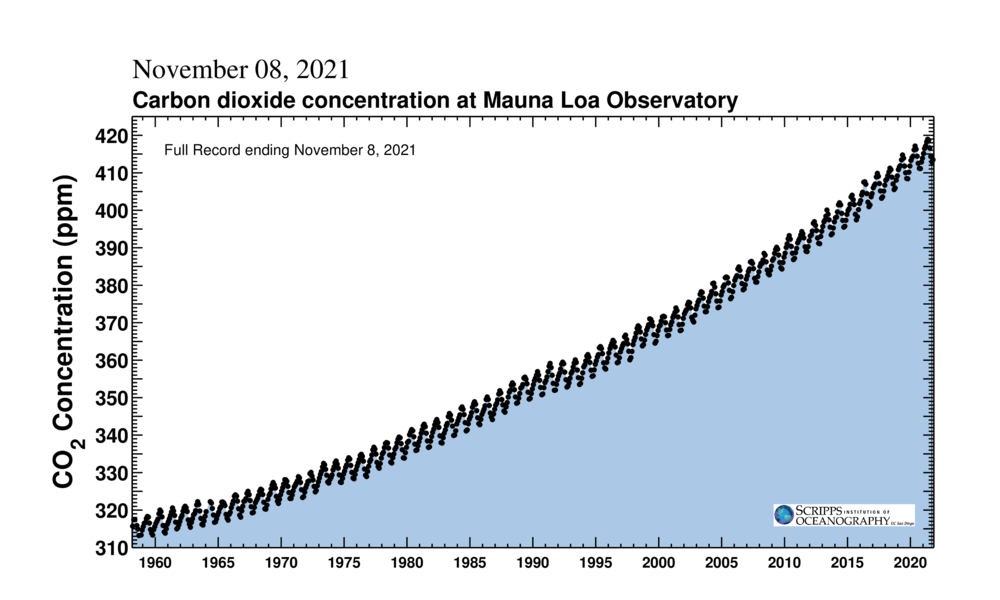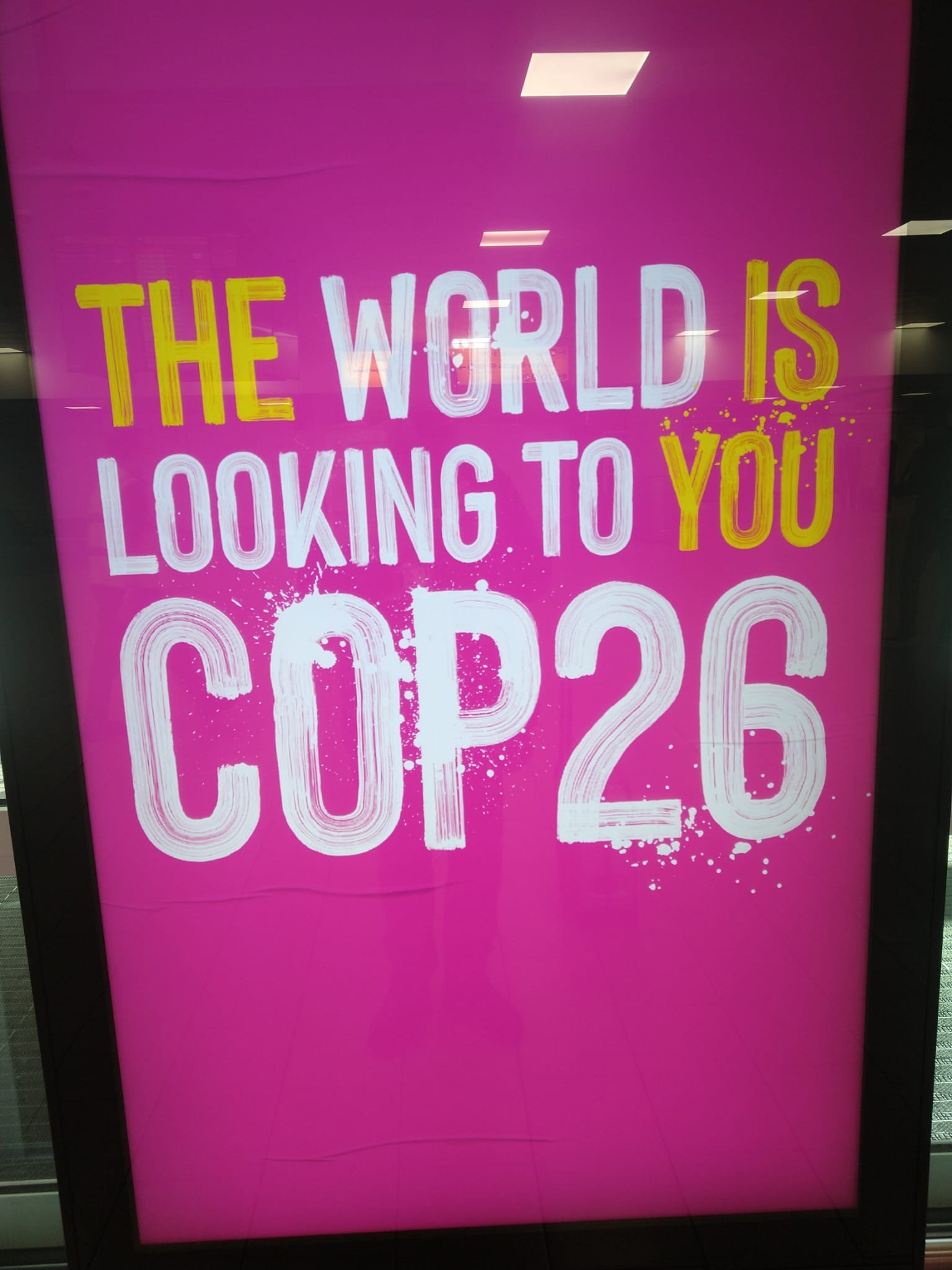Draft COP26 Outcomes Decision Published
We already know that 1.1°C global warming since pre-industrial times has already taken place. We already know that levels of atmospheric CO2 have been rising steadily and consistently and now stand at over 412 parts per million, the highest levels in human history, and levels last seen 4 million years ago when sea levels were 78 feet higher than today (Keeling Curve – Scripps Institution of Oceanography).
The Keeling Curve - http://scrippsco2.ucsd.edu/data/atmospheric_co2/primary_mlo_co2_record
The IPCC Physical Science Basis report issued on 9 August 2021 stated that the scientific basis of global warming was “unequivocal” and that irreversible climate change was already occurring in all regions of the world. One of the lead authors of that report, Professor Piers Forster, also a member of the UK Climate Change Committee, has said -
“The good news is that the [IPCC 9.8.21] report makes it clear that we can stop many of these extremes getting worse by stabilising temperatures. The bad news is that the frequency of unprecedented extreme weather will continue to increase until we limit further warming by achieving Net Zero carbon dioxide emissions.”
Therefore, governments know what to expect from the science and the weather until Net Zero is achieved: 195 world governments endorsed the science in the IPCC’s Physical Science Basis report. COP26 has been about demonstrating whether or not the world’s governments have the political will to address this science with comparable urgency. It is worth recalling that another IPCC Working Group Chair has pointed out that the difference between global warming of 1.5°C and 2.0°C can be “measured in terms of hundreds of millions of people in poverty”.
Against that framework, how should this working Draft on the outcomes of COP26 be measured? It appears to represent some progress, some ratcheting up of the machinery of transparency and reporting, and nudging and prompting countries towards further action, for example by more regular reporting of updated NDCs, but not, yet, nearly enough to meet the urgency of the issues. Fundamental issues such as the phase-out of fossil fuels as the basis for the energy transition are hardly addressed at all.
This is not a systematic review, but some short comments. The CMA3 Document:
Expresses alarm and concern at the 1.1°C warming to date (I-4);
Notes with serious concern the findings of Working Group I of the IPCC (II-5);
Urges further work on finance for adaptation (III-15);
Re-affirms Paris Agreement targets (IV-22, 23);
Calls for 45% CO2 cuts by 2030 as well as net zero “around mid century” (IV-24);
Calls for annual synthesis reports on the net collective effect of Nationally Determined Contributions (IV -31);
Calls on parties to accelerate phasing out of coal and subsidies for fossil fuels (IV-37) [thought to be the only reference to fossil fuels in the entire document];
Proposes a world leaders summit in 2023 [Also the year of the Paris Agreement Global Stocktake] (IV-40);
Aims to go beyond $100 billion per year for financial transfers and support for developing countries (V-44);
Expresses generalised support for addressing loss and damage, but with very few specifics (V);
Supports the just transition (VII-74);
Supports meaningful youth participation (VIII-78).
Spotted in Glasgow


